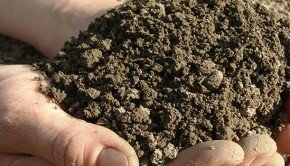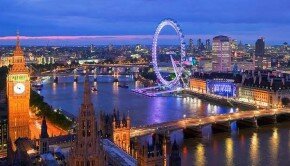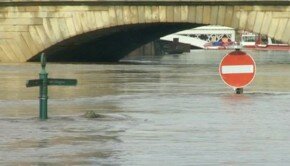A Role for Ecology in Land Regeneration
Event and site visits based on Thames Chase Community Forest, 28th April 2015
Report, comments and reflections by Nick Coppin, with additions by Andy Moffat
16 members of BLRS assembled at the Thames Chase Forest Centre, near Upminster, Essex, for this visit to 3 land reclamation sites.
Ingrebourne Hill Community Woodland.
A 45 ha community woodland based on former RAF Hornchurch. Mineral extraction then landfilled with waste. Site now owned by Ingrebourne Valley Ltd (IVL; business is disposing of surplus excavated material from civil engineering & construction projects, ie. inert materials). Management agreement with Forestry Commission who manage the site. [An alternative considered by FC for managing woodland creation on landfill sites was a ‘pie-crust’ lease, whereby the lessee only takes responsibility for the upper layer (the crust) whilst leaving responsibility (and environmental liabilities) for the landfill ‘pie’ with the landfill company.]
Objective of regeneration – high quality recreation and public amenity; also acts as a buffer between urban residential areas and nearby SSSI. Habitats created – woodland planting (high proportion of Corsican pine, with ash, cherry and native species) 20% to 25% of area, remainder is open grassland habitats, mostly rank grassland that is cut every 1 to 2 years in rotation. Also a small lake with marginal willow and reedbeds. Public access encouraged with a series of gravel and mown grass pathways, cycle track, fitness equipment and sculptures. Phase 1 of the site was developed 15 years ago, Phase 2 approx 7 years ago. Tree planting was slow to establish on Phase 2.
Experimental plots investigating how important is soil fauna – earthworm inoculation +/- greenwaste compost. Two year trial initially, due to complete in June 2015. Initial results suggest that it is just as important to get the soil physics and soil biodiversity right, as the fertility!
A constraint was working with government capital funding time tables, which meant that work was squeezed into a short timescale (<12 months) at a time not ideal for tree planting.
Thoughts:
- The site landscape was not habitat-led and neither is the current management regime. Woodland planting was pragmatic, priority was to establish tree cover that was visible rather than having biodiversity value.But does this matter – the important thing is to get pioneer species and canopy well established, then manage towards a desired woodland community? However, current management objectives do not seem to include this?
- Grassland areas have poor diversity, only isolated low-fertility areas having any flowering plants. The objective was stated as ‘public amenity’ and this was not (and still isn’t) equated with biodiversity or wildlife, but as something different.
- Suggest that ‘managed succession’ of some of the rank grassland areas to scrub and thence woodland would be a good objective; already some occasional Buddleia and Crataegus is evident. This would achieve a better balance of woodland cover on the site and using the natural processes does not have any capital funding requirement.
- The soil is not just an inert substrate for landscaping, it is a living and dynamic part of the ecosystem. Important to understand and manage this as to manage the vegetation and soil fertility.
Pinches Mountain
Owned by Ahern Waste Management.
Landfilled waste site has naturally colonised with areas of scrub & tree growth and open mosaic ruderal habitat (OMH) – mainly moss, lichen and ruderal herbs (on stony gravel and sandy waste). There is likely to be significant existing biodiversity value.
Regeneration objectives for this site are not defined. Scheme in preparation to ‘reclaim’ the site with 2m of soil cover and regenerate for public access and benefit – linking with the network of other sites. Question – is this driven by an obligation or desire to reclaim the site to something other than what nature is already doing (successfully), e.g. to a different land use or perception of untidiness, or is it driven by commercial considerations. Managing the existing site will involve some cost, so there is a need to balance the needs of biodiversity, recreation and economics.
Thoughts:
- To what extent is it valid to rely on natural processes and succession to deliver regeneration outcomes? Do we need to be seen to be doing something in order to be credible? What are the circumstances when passive or active restoration is appropriate – managed neglect vs. gardening, or would this be seen as just penny-pinching?
- Too much regeneration creates ‘ecological deserts’. The distinction between ‘recreation and public amenity’ and ‘biodiversity’ afteruses is artificial and unnecessary, they both should be mutually dependent and supportive. This requires more ecological thinking into reclamation and landscape schemes.
- Landscape ecology is important – connectivity, size distribution of greenspace. Thames Chase is a superb example of how wider landscape thinking is making a difference. But is there a need to have more biodiversity ecology as well? Nature conservation is not only about priority and protected habitats and species, it is also about common biodiversity.
Canvey Wick Nature Reserve
Site owned by The Land Trust (purchased from HCA) and managed on 25 year lease by RSPB and Buglife. Designated as SSSI for open mosaic habitats with exceptional invertebrate fauna (1400 species).
Was originally coastal grazing marsh, the site was filled with dredgings and prepared for use as an oil tank farm, including tarmac tank bases, but was never used. It was abandoned in 1972 and wildlife took over. The site was recognised as of high wildlife value during an EIA for a proposed commercial/retail development. Part of the site was designated and part is retained for possible superstore development, but this may not happen.
Soil is fine silty sand and gravel, low fertility, dry. After some years the OMH has been invaded by birch & willow scrub (as the soil fertility built up over time), so current management is to remove areas of scrub to maintain a mosaic of open sward, Phragmites and retain some woodland cover (40% area with scattered scrub cover is the objective). Also experimenting with disturbance (rotavating, harrowing and soil stripping) to maintain OMH (fire would be an ideal management tool, but a high-pressure gas main on the site precludes this). Public access is an important part of the site’s raison d’etre and the proposal to remove scrub and wood required public consultation to gain acceptance.
This site is a good example of natural colonisation and succession processes leading to a high wildlife and public amenity value, based on human-made substrate (possibly mimicking a natural disturbed or coastal substrate?).
Thoughts:
- OMH is a transitional habitat and this site is subject to increasing natural successional processes. Management to maintain the current status quo will require increasing effort and resources. How valid is it to attempt to arrest the natural succession and artificially maintain the present condition?
- Public stakeholders need to be involved in management decisions so that they give approval for changes and interference; they understand the scientific and nature conservation reasons when explained. However, there is a limit to the amount of intervention they will accept.
- Ideally the site would be split into segments and there would be a rotation from bare ground (freshly deposited dredgings) to successional woodland and scrub. But this would require significant interventions and may not be possible – both cost and public acceptance.
- Even better would be to have a procession of sites like this being created, so as older ones progressed to woodland (also valuable) new ones were coming on stream to maintain the OMH resource. Could site management contribute to this? Unfortunately there is a resistance (in LPA etc) to accept ‘doing nothing’ and allowing nature to take its course as a land-use option.
General thoughts and reflections on the day (and retrospectively):
The 3 sites visited highlight that nature on its own, given time, can do an excellent job of regenerating brownfield sites, sometimes achieving better biodiversity outcomes (notably open mosaic habitats and scrub/woodland) than our anthropogenic regeneration. They also illustrated that biodiversity could enhance the public recreation and amenity value of a site, and that amenity/recreation is compatible with biodiversity. However, this does not mean that every brownfield site would develop high biodiversity value if left to its own devices (passive regeneration/restoration), or that active regeneration cannot deliver high biodiversity value.
How useful might it be to use the NVC more to set regeneration objectives? Recent FR BPNs are generally based on habitat types (lowland acid, neutral and calcareous grasslands), and these refer generally to the NVC, but do not go very far in guiding how this can be translated into practice. Regeneration is typically opportunistic in terms of soil forming materials (what is available at the time) with landform, drainage, etc., dictated by engineering and related considerations, such as planning conditions. So maybe designing from the habitat up is not realistic, unless we get much more ecological (and soils) input at an earlier stage in project design, or even leading the project!
A buzzword today is ‘multi-functionality’ (see NE’s Green Infrastructure Guidance). We need to be integrating public amenity (however one determines to define it), recreation, biodiversity and productivity (productive woodland and forage crops), along with other ecosystem services, into our regeneration/reclamation objectives. But we don’t have to choose between them – we can bring them all together.
Let’s think more about:
- Woodland planting mixtures – should we base these more on NVC woodland communities at planting, or focus on pioneer shrub and tree establishment (ie. applying the ‘right place, right tree’ principle) and then seek to manage a succession to the right community? If NVC woodland communities did form the basis for planting design, what about the effects of climate change, which will probably have an effect on woodland communities over their development timescale?
- Grassland areas when soil forming material is fertile – how can we manage rank grassland to achieve more biodiverse swards, or alternatively encourage succession to scrub and woodland (thereby increasing the area of tree cover at no cost)?
- Good regeneration depends on soil physics and soil biodiversity (especially fauna) as well as soil fertility and the vegetation. At the moment we tend to just let nature (and natural processes) takes its course, but could we do more?
In the long term, much of the visible success and perception of a regeneration scheme depends on the vegetation, habitat, its biodiversity and landscape ecology. So it is disappointing that so little of the total project resource goes into this aspect of a scheme. Ecology is often an afterthought, or not considered at all, with the perception that it is only relevant to high nature conservation value, and not relevant to high quality public amenity and recreation.
We need to find new funding mechanisms for undertaking these sort of regeneration schemes, as public (taxpayer) funding comes under increasing pressure; also need to avoid the usual government capital funding problems. Public-private commercial opportunities such as that between IVL (construction waste disposal company) and the Forestry Commission have been successfully used at Thames Chase , involving management agreements and endowment funds. Also, what about new mechanisms such as biodiversity offset provision, community infrastructure levy and payment for ecosystem services – might these be adapted and utilised to deliver regeneration? The application of restoration bonds by a developer could also alleviate concerns over what happens at the end of a site’s life when the owner has liquidated and sidestepped the restoration obligations (this was not an issue on the sites visited).
Who are the agencies that can deliver regeneration and post-regeneration site management, when an owner/operator or developer is not managing this himself (through normal in-house or contracting processes)? Forestry Commission, Groundwork, Land Trust, RSPB, Wildlife Trusts? Who has the resources and expertise? Might there be an increasing involvement of biodiversity offset providers?
Many thanks to Forest Research’s Land Regeneration and Urban Greenspace Research Group for organising the event and to Forestry Commission Thames Beat team, Ingrebourne Valley Ltd, Aherns, RSPB, the Land Trust and Buglife for facilitating. The views expressed above are those of the author and do not necessarily represent the views of the Forestry Commission, BLRS or any other members of the visiting group.












